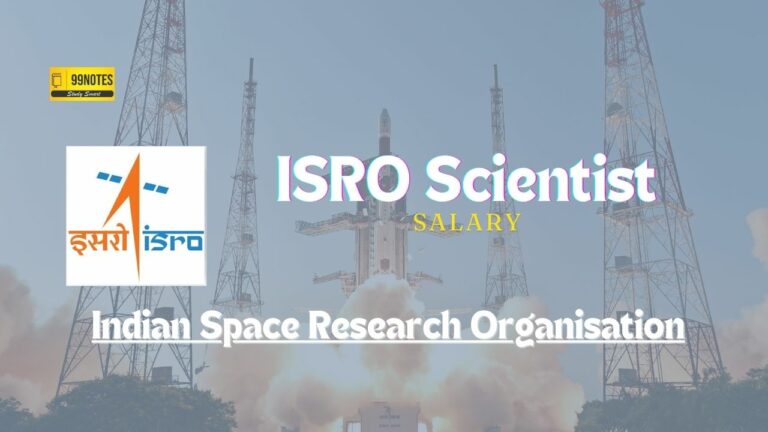99Notes Scoreback Program
99Notes Scoreback program simply awards you a scholarship equivalent to the percentage of score that you score on the scholarship test. The percentage of marks obtained in the scholarship would be reduced from the amount of tuition fees that 99Notes charges for its 1-year, 2-year and 3-year foundation courses.
The idea behind the test is of fairness. We cannot judge a student by a single standard cut-off. If you miss the cutoff by just a few numbers, you should not be declared absolutely undeserving. The problem with traditional scholarship tests is that they leave no space for grey areas and see everything as black and white.
Earn your Scholarship
Another Idea behind such a mechanism is to enable you to earn your scholarship. Just like in the practical world you earn equivalent to the hard work you put in, you get a chance to earn as much scholarship as you have worked for.
Suppose you score 40 marks out of 100 marks on the scholarship test, i.e. 40%. You will be awarded a 40% scholarship on the foundation course straightaway.
The one-hour scholarship test would consist of 50 questions of 2 marks each.
In order to disincentivise flukes and people trying their stroke of luck even in the questions that they do not know, there would be a negative marking equivalent to one-third of the marks awarded for the right answer.
The scoreback test can be taken up at two levels, one for the students who have passed the intermediate level (12th Pass) and another for those who are graduates. The syllabus for both levels would be similar but very slightly different.
Syllabus of the Scoreback Program
The test is divided into 10 sections, which include Indian History, society, Geography, Indian Polity, Economics, Agriculture, Ethics, Environment, Reasoning & Mathematics, and Comprehension.
Each section consists of 5 questions of 2 marks each. All questions are compulsory.
Standard of Knowledge required:
For the Intermediate level test, anyone with a good grasp of the school-level curriculum can easily score in this paper. Apart from this, the section on Ethics and Reasoning is designed in such a way that any well-reasoned candidate can solve it.
Similarly, for the graduate level test, apart from the general understanding of the basic concepts, the candidates might expect a few questions on current events based on those topics.
Dates of the Scoreback tests
Generally, these tests are conducted in the first week of every month. In order to ensure that the tests are not predictable, the candidates would not be allowed to take back the question booklet. Further, each time a new set of questions would be asked.
This test is only conducted offline to ensure that no malpractice such as cheating is involved.
However, in case of an exceptional performance in a test, it is possible that an interview is held in order to cross-verify and ensure that the performance was not a result of any kind of malpractice.
Many candidates have benefitted from the scoreback program and were enrolled in our foundation courses through the Scholarship route. We expect you to benefit from the course as well.
Sample questions from each section
SAMPLE QUESTIONS
- Indian History
Who amongst the following is the father of Sanskrit Drama?
- Kalidas
- Surdas
- Ravidas
- Tulsidas
Solution: a
- Society:
Which of the following statements is not correct?
- Vulnerability of a community increases with poverty
- Discrimination against a community makes it more vulnerable
- Poverty is both cause and consequence of discrimination
- Indian constitution does not provide any protection to the vulnerable sections of the society
Solution: d
- Geography
What is cloudburst?
- It is the rapid orographic precipitation.
- It is an extreme amount of precipitation in a short amount of time.
- Both a and b.
- It is the massive amount of rainfall in a small area.
Solution: b
- Indian Polity
Which of the following is/are the correct interpretation of the term equality in the Indian constitution?
- Equality before Law
- Equal Protection of Law
- Both a and b
- None of the above
Solution: c
- Economy
Which of the following is not a direct tax?
- Income Tax
- Capital Gains Tax
- Wealth Tax
- Sales Tax
Solution: d
- Science & Tech
Consider the following statements in respect of a jet engine and a rocket:
- A jet engine uses the surrounding air for its oxygen supply and so is unsuitable for motion in space.
- A rocket carries its own supply of oxygen in the gas form and fuel.
Which of the statements given above is/are correct?
- 1 only
- 2 only
- Both 1 and 2
- Neither 1 nor 2
Solution: a (Statement 2 is incorrect because Oxygen is carried not as gas)
- Ethics
Sundar is an honest inspector in the Delhi police. He has recently bought a home with the help of a loan. Due to some expenditure on unforeseen health issues in the family he has been finding it difficult to pay back this loan. Despite many offers of help from the local politicians, he has refused any help.
Which of the following qualities of Inspector Sundar is on display in the above example?
- Honesty
- Impartiality
- Integrity
- Ethics
Solution: c (Integrity is the quality of being ethical in even an adverse situation)
- Environment
Which of the following gasses cannot be termed as a greenhouse gas?
- Nitrogen Oxide
- Carbon Monoxide
- Oxygen
- Hydrogen Sulphide
Solution: c
- Reasoning and Mathematics
Consider the following sequence
1, 3, 7, 15, 31 …
Which of the following can be the next number in this sequence?
- 63
- 53
- 64
- 67
Solution: a
- Comprehension
Read the following Paragraph:
Back in the boom years of the late 1990s, when technology stocks seemed to be doubling in value every day, the notion that you could lose almost all your money seemed absurd. But, by the end of 2002, many of the dot-com and telecom stocks had lost 95% of their value or more. Once you lose 95% of your money, you have to gain 19 times just to get back to where you started. Taking a foolish risk can put you so deep in the hole that it’s virtually impossible to get out. That’s why avoiding losses is constantly emphasized by the best of the fund managers.
Which of the following is the best caption for the paragraph?
- Gambling is a bad habit.
- Why one should not invest in stocks
- Importance of Managing Risks
- Tricks of fund managers
Solution: c





